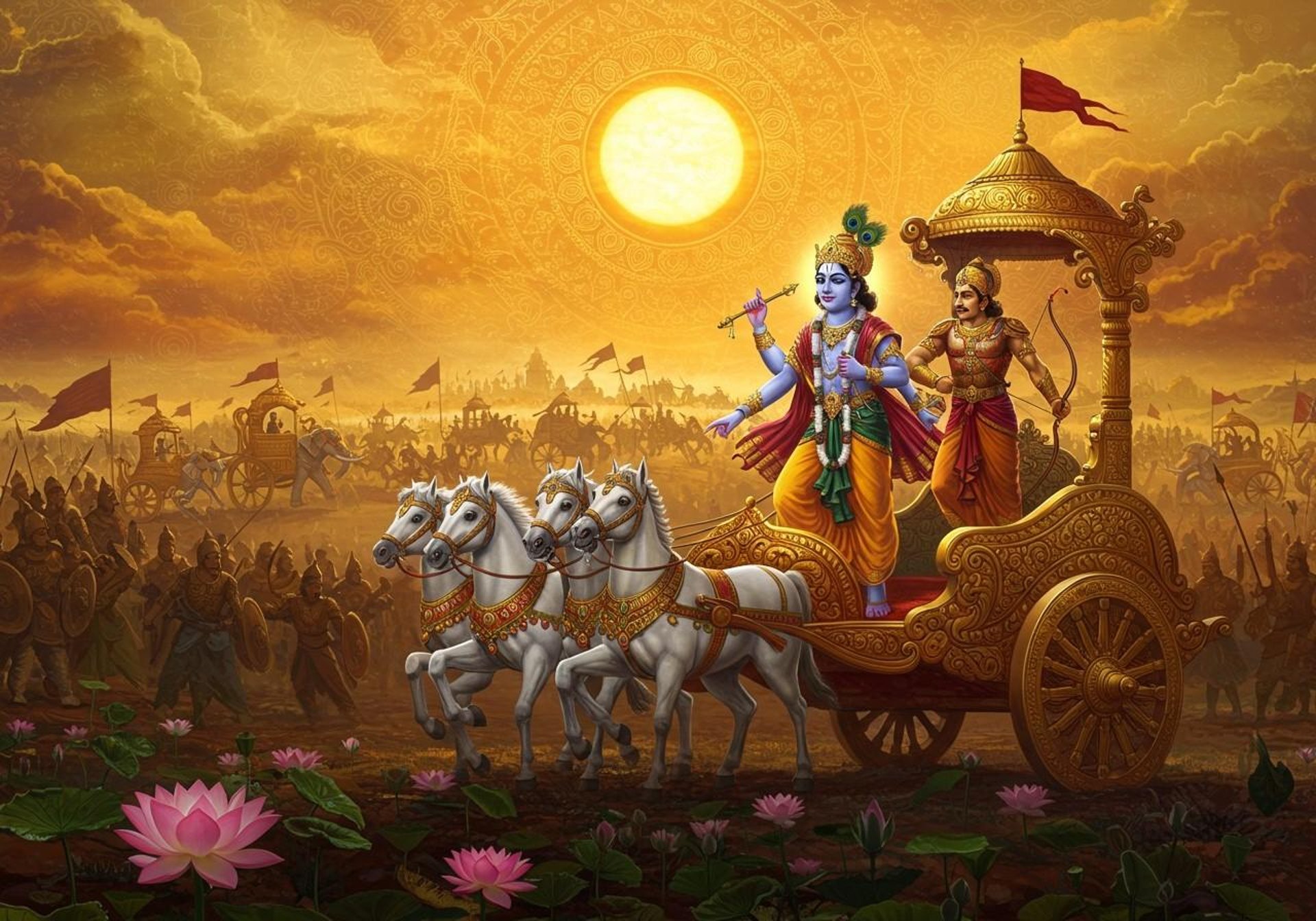Discover divine wisdom, guided meditations & powerful mantras at Spiritual Khazana—your sacred space for inner peace & enlightenment.
Verse
ओमित्येतदक्षरमिदं सर्वं तस्योपव्याख्यानं भूतं भवद् भविष्यदिति सर्वमोङ्कार एव।
यच्चान्यत् त्रिकालातीतं तदप्योङ्कार एव ॥
Transliteration
omityetadakṣaramidaṁ sarvaṁ tasyopavyākhyānaṁ bhūtaṁ bhavad bhaviṣyaditi sarvamoṅkāra eva|
yaccānyat trikālātītaṁ tadapyoṅkāra eva ||
Anvaya
इदं सर्वं इति एतत् अक्षरम् उपव्याक्षानं भूतं भवत् भविष्यत् इति सर्वम् ओङ्कारः एव। अन्यत् च यत् त्रिकालातीतं तत् अपि ओङ्कारः एव ॥
Anvaya Transliteration
idaṁ sarvaṁ iti etat akṣaram upavyākṣānaṁ bhūtaṁ bhavat bhaviṣyat iti sarvam oṅkāraḥ eva| anyat ca yat trikālātītaṁ tat api oṅkāraḥ eva ||
Meaning
OM is this imperishable Word, OM is the Universe, and this is the exposition of OM. The past, the present and the future, all that was, all that is, all that will be, is OM. Likewise all else that may exist beyond the bounds of Time, that too is OM.
Hindi Meaning
'ओम्' ही है यह 'अक्षर-शब्द', 'ओम्' ही सशृण 'विश्व' है और यह 'ओम्' की ही व्याख्या है! भूत, वर्तमान तथा भविष्य अर्थात् जो कुछ था, जो कुछ है तथा जो कुछ होगा, वह 'ओम्' है। इसी प्रकार 'काल' (त्रिकाल) की सीमा से परे जो कुछ भी हो सकता है वह भी 'ओम्' ही है।
Glossary
ओम् इति - om iti - OM is | एतत् - etat - this | अक्षरम् - akṣaram - imperishable Word | इदम् सर्वम् - idam sarvam - (OM is) the Universe and all this is | तस्य उपव्याक्षानम् - tasya upavyākṣānam - the exposition of OM | भूतम् - bhūtam - the past | भवत् - bhavat - the present | भविष्यत् इति - bhaviṣyat iti - and the future | सर्वम् - sarvam - all that was, all that is, all that will be | ओङ्कारः एव - oṅkāraḥ eva - is OM | अन्यत् च - anyat ca - likewise all else | यत् त्रिकालातीतम् - yat trikālātītam - that may exist beyond the bounds of Time | तत् अपि - tat api - that too | ओङ्कारः एव - oṅkāraḥ eva - is OM |
CLICK HERE TO GO TO THE SOURCE PAGE OF "OM" IN MANDOKYA UPANISHAD VERSE-1
'OM'-Sound of The Universe
Mandukyopanishad- Verse-1
OM (or AUM) is not merely a sound or symbol. It is the primordial vibration—the seed sound ("Nada Bindu")—from which the universe emerged. Found in the deepest layers of Hindu scriptures and yogic sciences, OM is regarded as the cosmic frequency that permeates all creation.
In Sanskrit: OM is a blend of three sounds: A (waking), U (dream), M (deep sleep)
Symbolically: It represents the union of body, mind, and soul
Spiritually: OM connects the practitioner with the divine consciousness
The Mandukya Upanishad is entirely dedicated to OM. It describes OM as the essence of the universe and the key to self-realization.
OM is referred to as "Pranava"—that which pervades life. It is a path to Brahman, the ultimate reality.
Bhagavad Gita
Lord Krishna says:
“I am the syllable OM in all the Vedas.” — (BG 7.8)
“Whoever, at the time of death, utters OM and leaves the body thinking of Me, attains the supreme goal.” — (BG 8.13)
Yoga Sutras of Patanjali
Patanjali refers to OM as "Ishvara’s name" (I.27) and suggests meditating on it for liberation from mental afflictions.




Scientific Understanding of OM Chanting
Modern science has begun to validate what yogis knew for thousands of years.
Brainwave Synchronization
EEG studies show that chanting OM increases alpha and theta brainwaves—states associated with deep relaxation and meditation.
Autonomic Nervous System
OM activates the parasympathetic system, calming the heart and breath
Reduces cortisol (stress hormone) levels
Vibrational Healing
The vibration of OM stimulates the vagus nerve, improving emotional regulation and gut-brain health
The sound resonates through the nasal and chest cavity, creating a full-body calming effectMedical Research HighlightsA 2011 study in the International Journal of Yoga shows OM chanting increases alertness and emotional stability
NIH-supported research confirms OM improves heart rate variability (HRV), reducing hypertension risks

